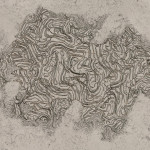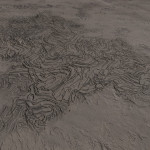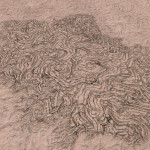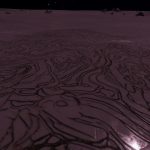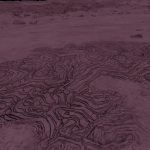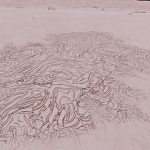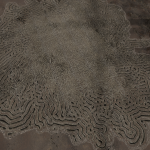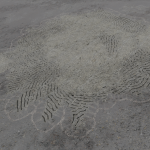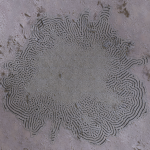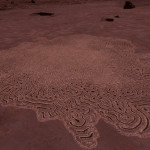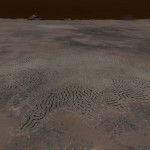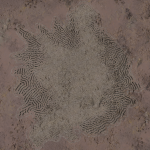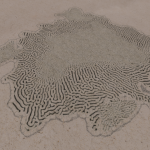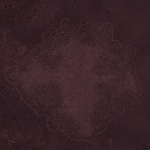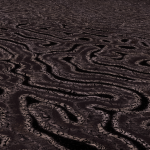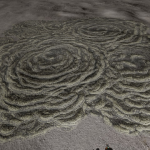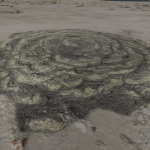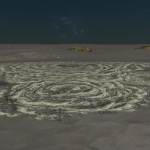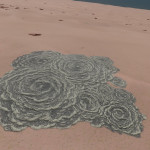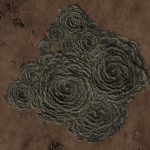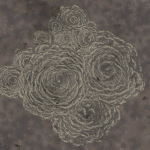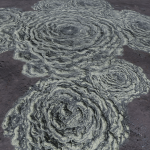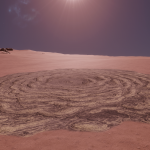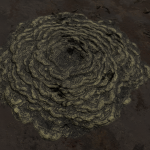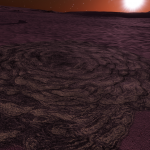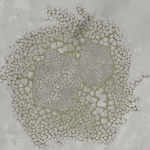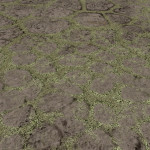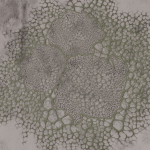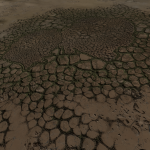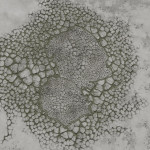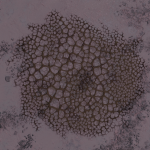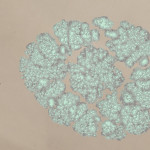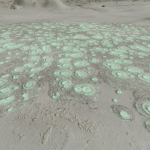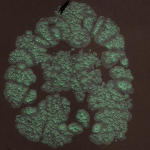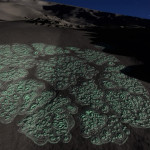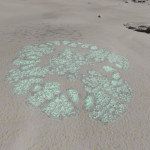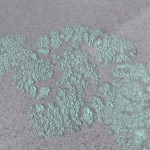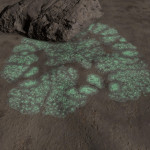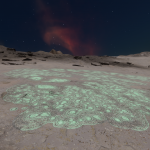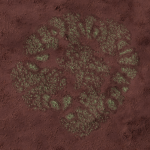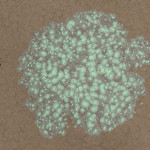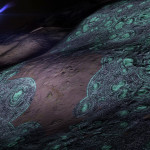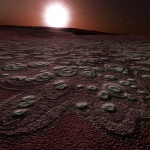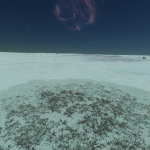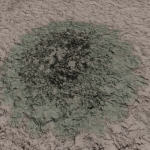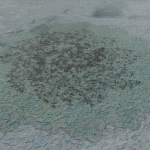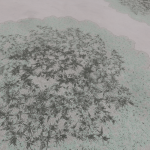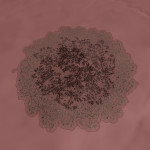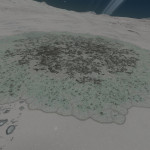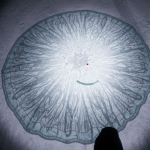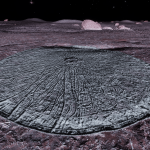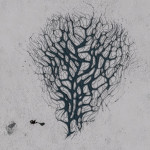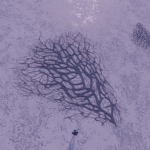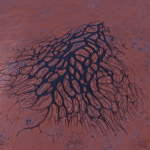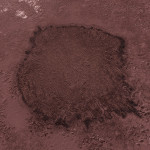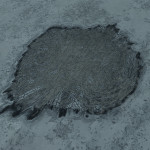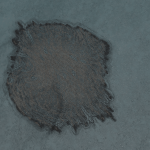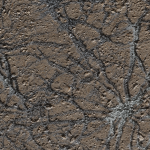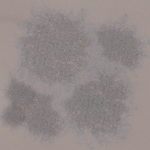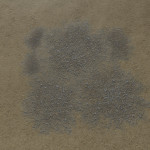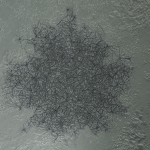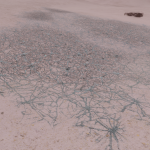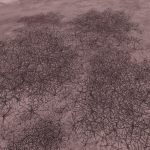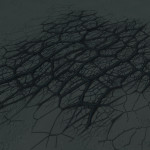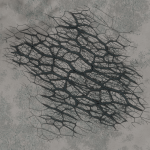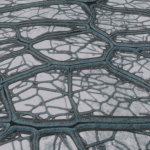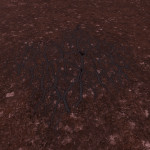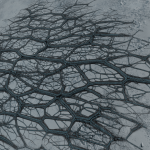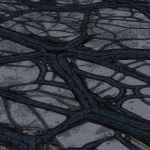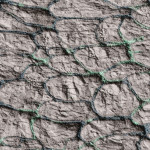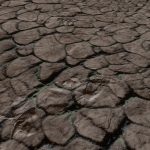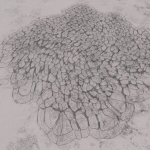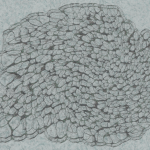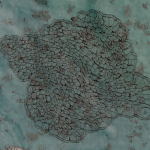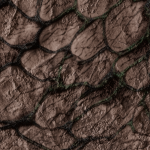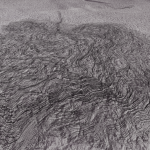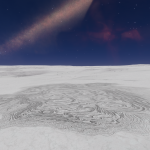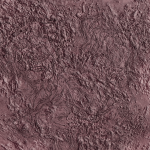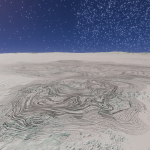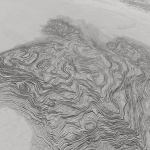Bacterium genus
Description
True unicellular extremophiles capable of living in the full spectrum of temperatures, chemical soups and atmospheres. They form a kaleidoscopic range of patterns and colours based on their method of metabolism. They derive energy from photosynthetic chemosynthetic or thermosynthetic processes. These are believed to be the precursors for many life forms, and are often found in conjunction with other species. Links between the biochemistry of bacterial colonies and neighbouring organisms are likely but as yet unproven.
Minimum distance between two genetic samples: 500 m
Conditions of occurrence
- All planets with thin atmosphere
| Atmosphere type | Species |
|---|---|
| Helium | Bacterium nebulus |
| Neon, Neon-rich | Bacterium acies Bacterium omentum (Nitrogen or Ammonia based volcanism) Bacterium scopulum (Carbon or Methane based volcanims) Bacterium verrata (Water based volcanism) |
| Methane, Methane-rich | Bacterium bullaris |
| Argon, Argon-rich | Bacterium vesicula |
| Nitrogen | Bacterium informem |
| Oxygen | Bacterium volu |
| Ammonia | Bacterium alcyoneum |
| Carbon dioxide Carbon dioxide rich | Bacterium aurasus |
| Water, Water rich | Bacterium cerbrus |
| Sulfure dioxide | Bacterium cerbrus |
| Any | Bacterium tela (Helium, Iron or Silicate based volcanism) |
Bacterium acies
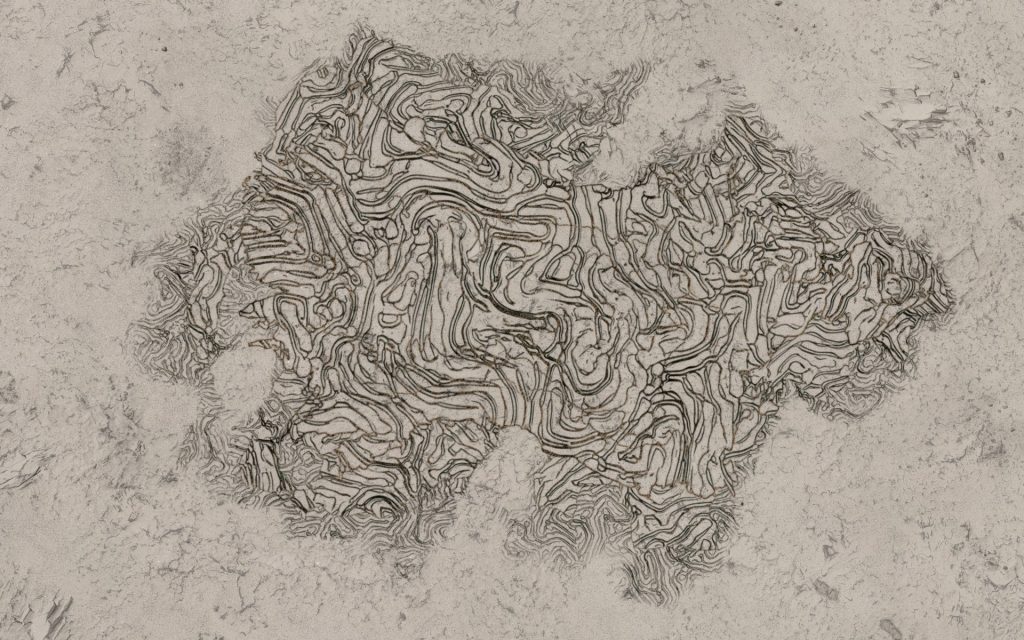
Description
A bacterial species that converts energy from neon-based atmospheres, creating looping whirls of bright colour.
Conditions of occurrence
- Planet with thin Neon or Neon-rich atmosphere
Colored variants
Colored variant determined by rare material found on planet:
| Material | Color |
|---|---|
| Antinomy | Cyan |
| Polonium | Magenta |
| Ruthenium | Cobalt |
| Technetium | Lime |
| Tellurium | White |
| Yttrium | Aquamarine |
Bacterium alcyoneum
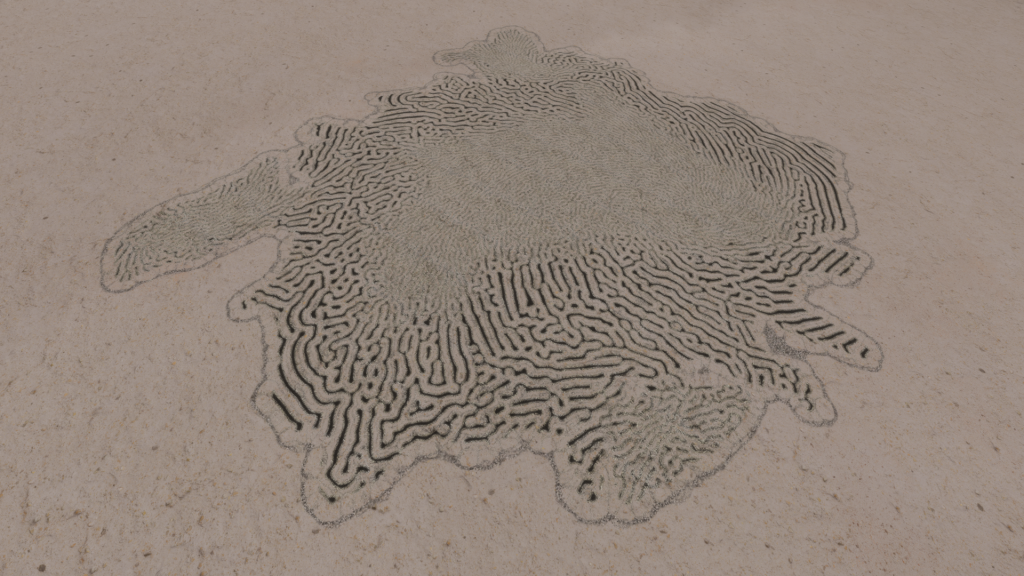
Description
A bacterial species found in ammonia-based atmospheres that lives in sunlight. A colony’s appearance resembles an intricate maze.
Conditions of occurrence
- Planet with thin Ammonia atmosphere
Colored variants
Colored variant determined by the parent star type:
| Star Type | Color |
|---|---|
| O | Turquoise |
| B | Grey |
| A | Yellow |
| F | Lime |
| G | Emerald |
| K | Green |
| M | Teal |
| L | Sage |
| T | Red |
| TTS | Maroon |
| Y | |
| W | Amethyst |
| D | Ocher |
| N | Indigo |
Bacterium aurasus
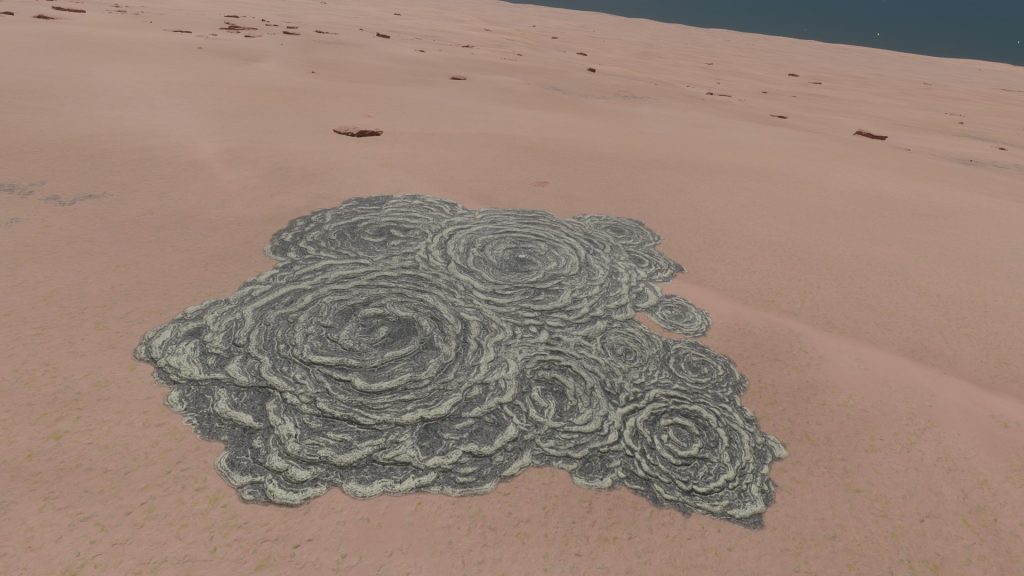
Description
These bacteria thrive on sunlight in atmospheres rich with carbon clioxicle. They cause blanket coloration across a planetary surface.
Conditions of occurrence
- Planet with thin Carbon Dioxide atmosphere
Colored variants
Colored variant determined by the parent star type:
| Star Type | Color |
|---|---|
| O | Turquoise |
| B | Grey |
| A | Yellow |
| F | Lime |
| G | Emerald |
| K | Green |
| M | Teal |
| L | Sage |
| T | Red |
| TTS | Maroon |
| Y | |
| W | Amethyst |
| D | Ocher |
| N | Indigo |
Bacterium bullaris
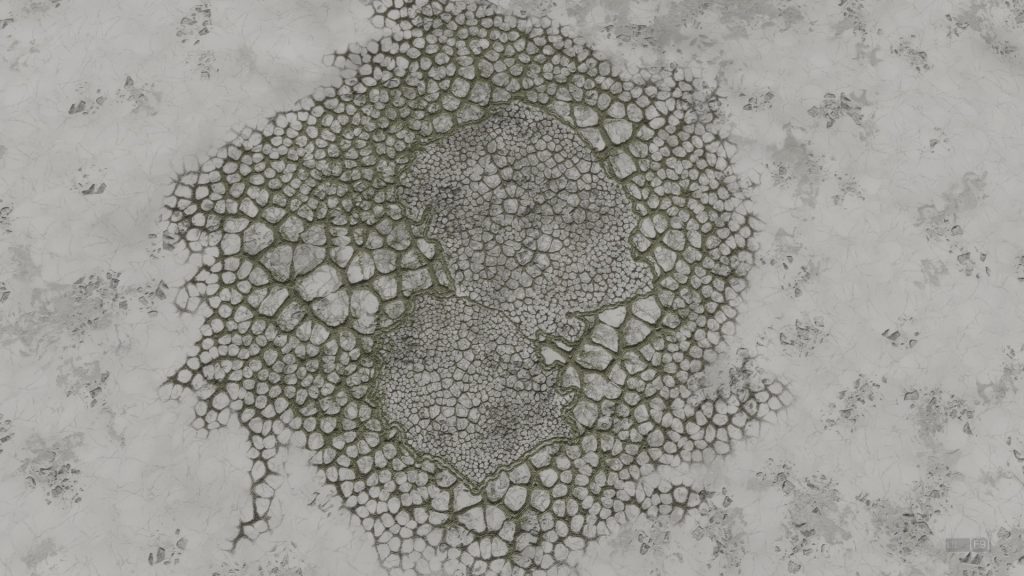
Description
This species of bacteria thrives on atmospheric methane, appearing as a network of linked bubble paiterns.
Conditions of occurrence
- Planet with thin Methane or Methane-rich atmosphere
Colored variants
Colored variant determined by rare material found on planet:
| Material | Color |
|---|---|
| Antinomy | Cobalt |
| Polonium | Yellow |
| Ruthenium | Aquamarine |
| Technetium | Gold |
| Tellurium | Lime |
| Yttrium | Red |
Bacterium cerbrus
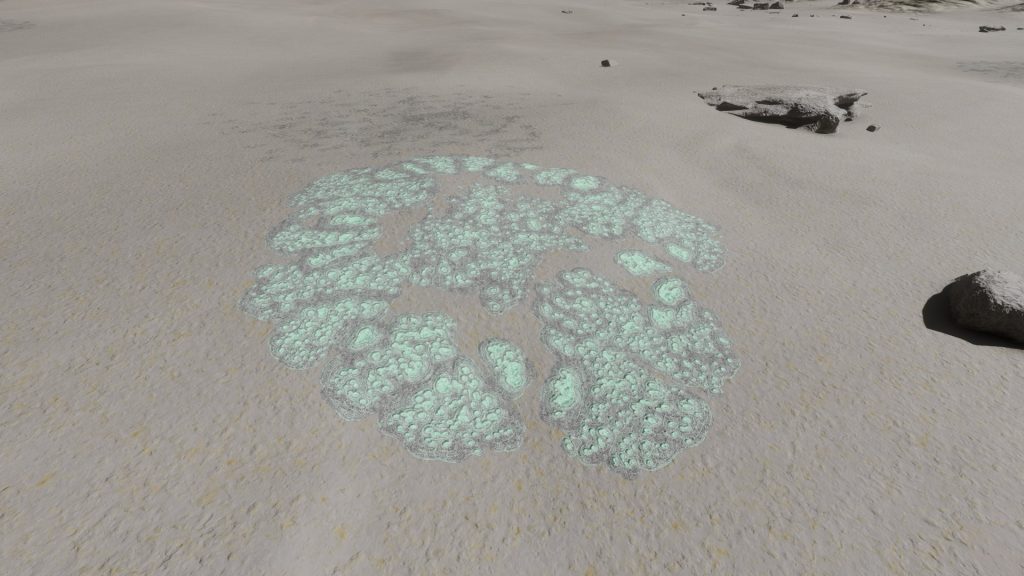
Description
A sunlight-converting bacterial species on worlds with atmospheres dominated by water and sulphur dioxide. Their colonies resemble a brain-shaped mass of smaller connected cells.
Conditions of occurrence
- Planet with thin Water of Sulfur Dioxide atmosphere
Colored variants
Colored variant determined by the parent star type:
| Star Type | Color |
|---|---|
| O | Turquoise |
| B | Grey |
| A | Yellow |
| F | Lime |
| G | Emerald |
| K | Green |
| M | Teal |
| L | Sage |
| T | Red |
| TTS | Maroon |
| Y | |
| W | Amethyst |
| D | Ocher |
| N | Indigo |
Bacterium informem
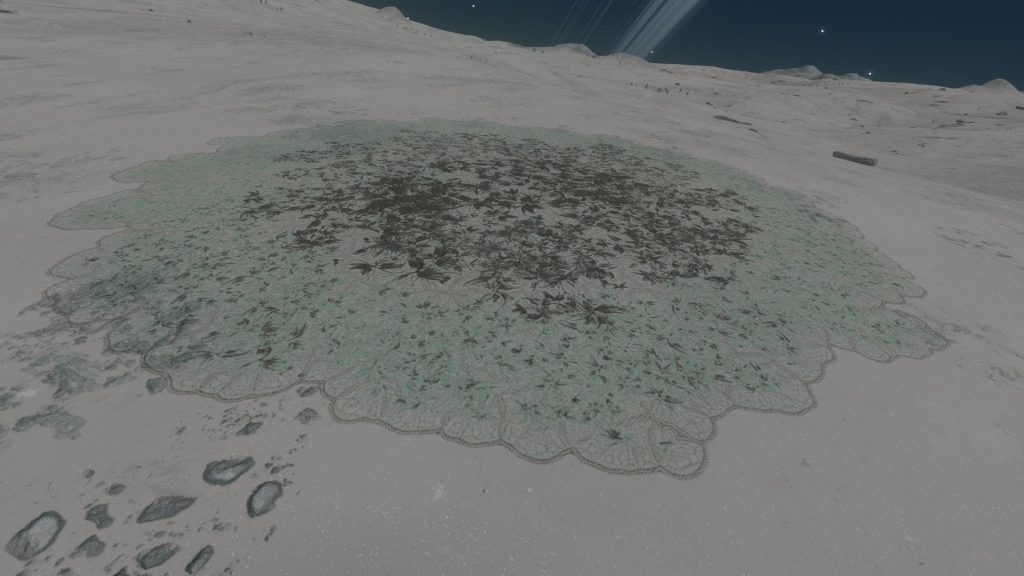
Description
These bacteria can be found in nitrogen atmospheres, and form a shapeless mass across the surface.
Conditions of occurrence
- Planet with thin Nitrogen atmosphere
Colored variants
Colored variant determined by rare material found on planet:
| Material | Color |
|---|---|
| Antinomy | Red |
| Polonium | Lime |
| Ruthenium | Gold |
| Technetium | Aquamarine |
| Tellurium | Yellow |
| Yttrium | Cobalt |
Bacterium nebulus
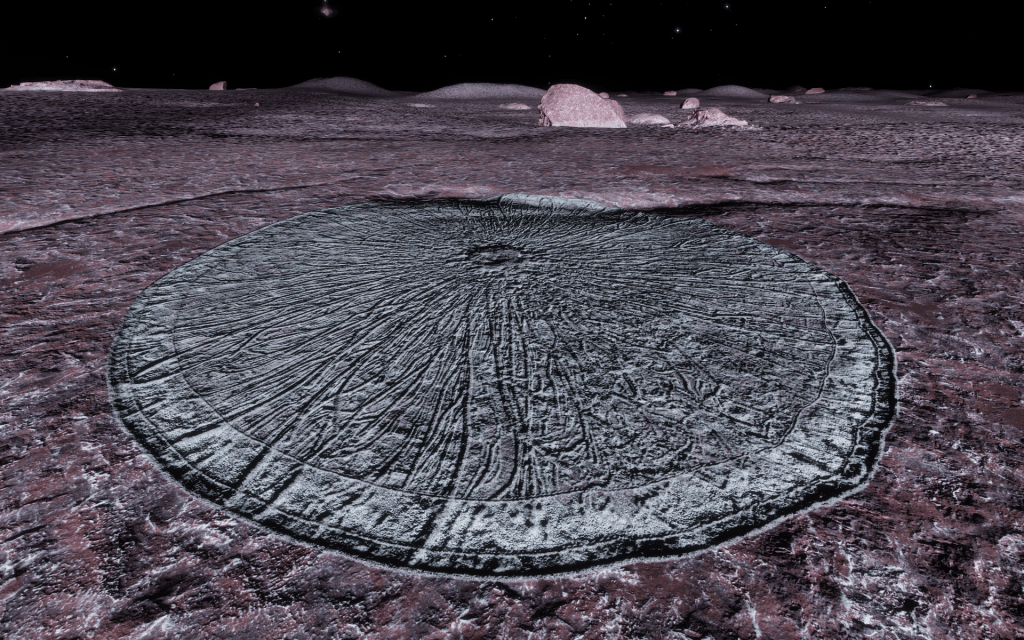
Description
A bacterial species that survives exclusively on atmospheric helium. They are distinguished by a radial pattern extending outward from the colony’s centre.
Conditions of occurrence
- Planet with thin Helium atmosphere
Colored variants
Colored variant determined by rare material found on planet:
| Material | Color |
|---|---|
| Antinomy | Magenta |
| Polonium | Gold |
| Ruthenium | Orange |
| Technetium | |
| Tellurium | Green |
| Yttrium | Cobalt |
Bacterium omentum
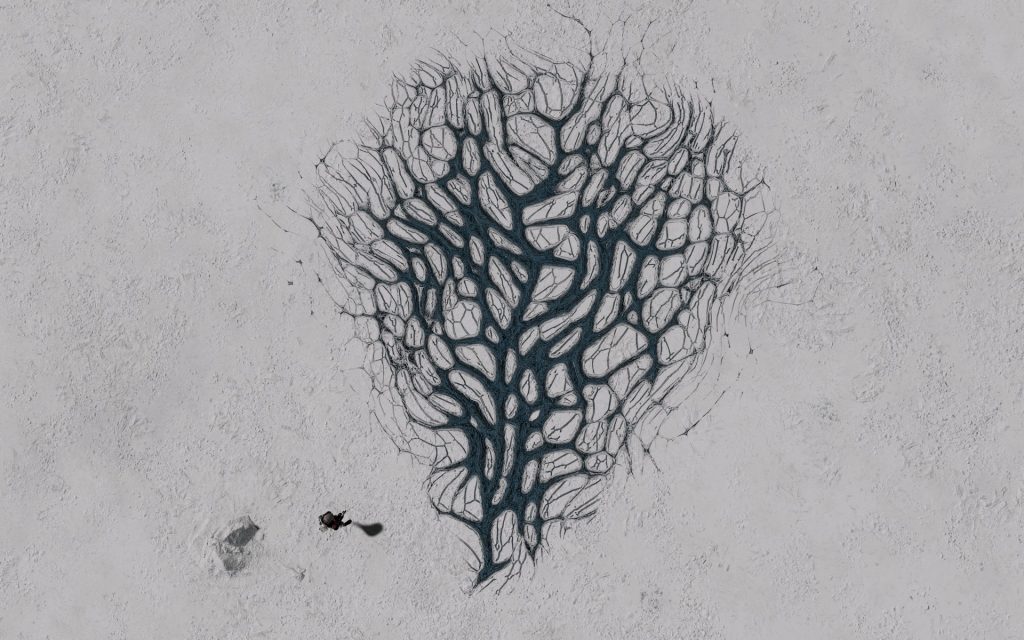
Description
These bacteria convert geothermal heat from nitrogen-based volcanic sites into energy. They appear as long interlinked strands across the surface.
Conditions of occurrence
- Planets with thin Neon or Neon-rich atmosphere
- Nitrogen or Ammonia based Volcanism
Colored variants
Colored variant determined by rare material found on planet:
| Material | Color |
|---|---|
| Cadmium | Lime |
| Mercury | White |
| Molybdenum | Aquamarine |
| Niobium | Peach |
| Tungsten | Blue |
| Tin | Red |
Bacterium scopulum
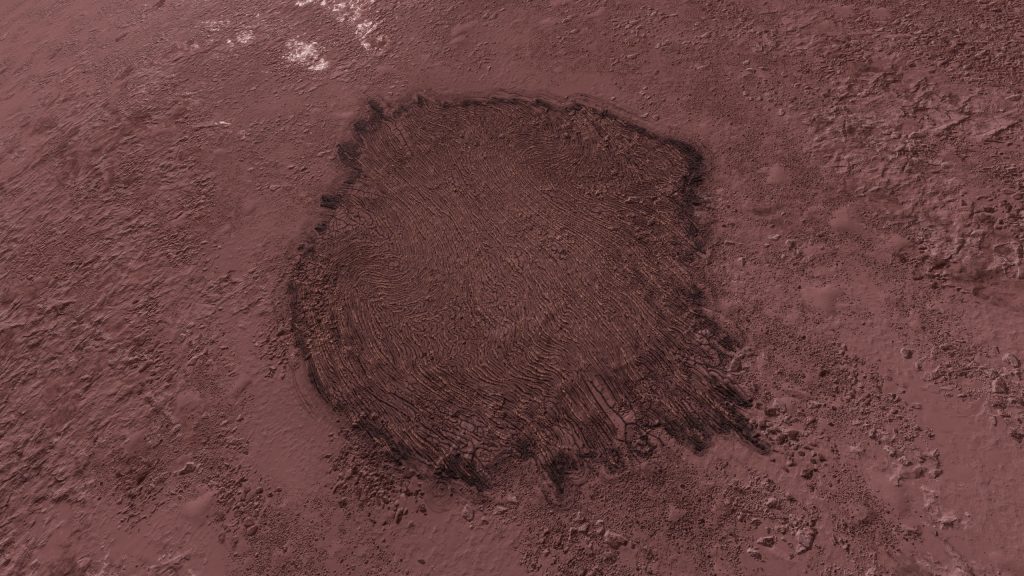
Description
These bacteria thrive on the heat generated by carbon-based volcanic activity and appear as long swirling ridges on the surface.
Conditions of occurrence
- Planets with thin Neon or Neon-rich atmosphere
- Carbon or Methane based volcanism
Colored variants
Colored variant determined by rare material found on planet:
| Material | Color |
|---|---|
| Cadmium | White |
| Mercury | Peach |
| Molybdenum | Lime |
| Niobium | Red |
| Tungsten | Aquamarine |
| Tin | Mulberry |
Bacterium tela
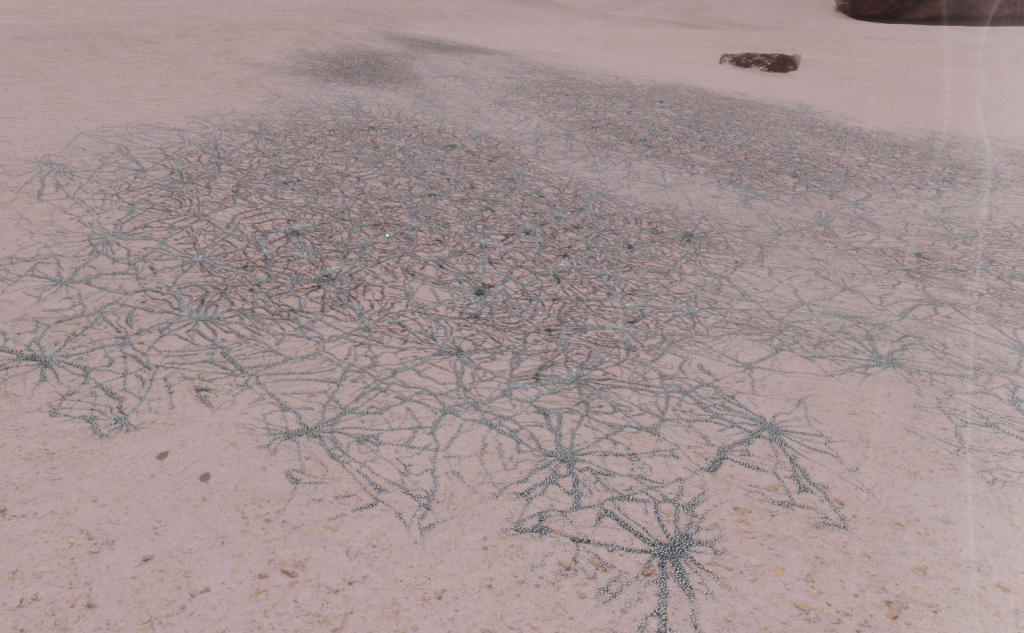
Description
These bacteria appear as an intricate web pattern. They thrive in proximity to helium-based, iron-based and silicate-based volcanic sites.
Conditions of occurrence
- Planets with thin atmosphere
- Helium, Iron, Silicate or Ammonia based volcanism
Colored variants
Colored variant determined by rare material found on planet:
| Material | Color |
|---|---|
| Cadmium | Gold |
| Mercury | Orange |
| Molybdenum | Yellow |
| Niobium | Magenta |
| Tungsten | Green |
| Tin | Cobalt |
Bacterium verrata
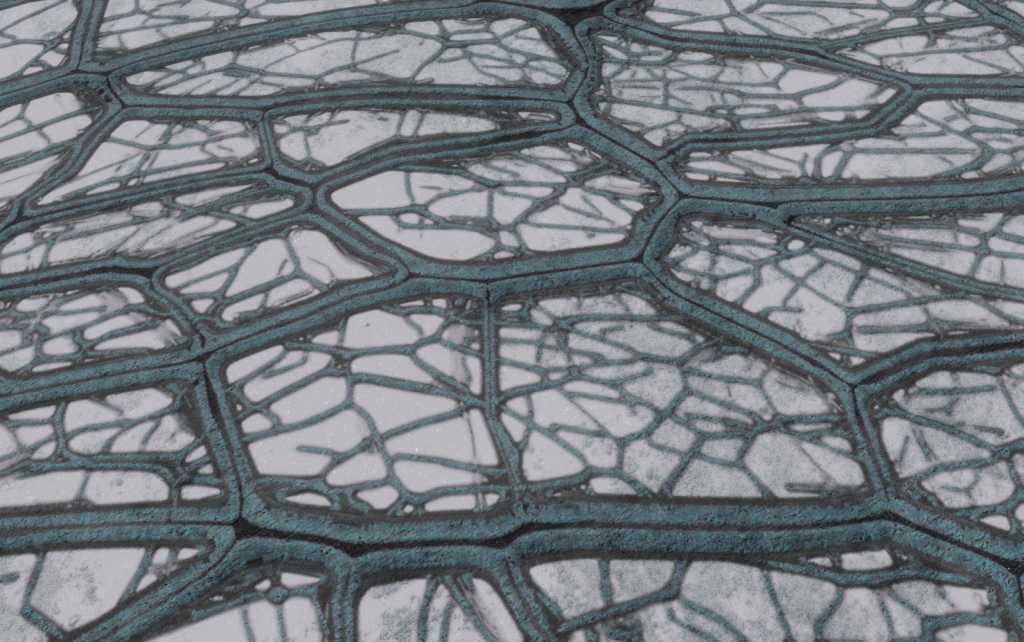
Description
These bacteria appear as an intricate web pattern. They thrive in proximity to helium-based, iron-based and silicate-based volcanic sites.
Conditions of occurrence
- Planets with thin Neon or Neon-rich atmosphere
- Water based volcanism
Colored variants
Colored variant determined by rare material found on planet:
| Material | Color |
|---|---|
| Cadmium | Peach |
| Mercury | Red |
| Molybdenum | White |
| Niobium | Mulberry |
| Tungsten | Lime |
| Tin | Blue |
Bacterium vesicula
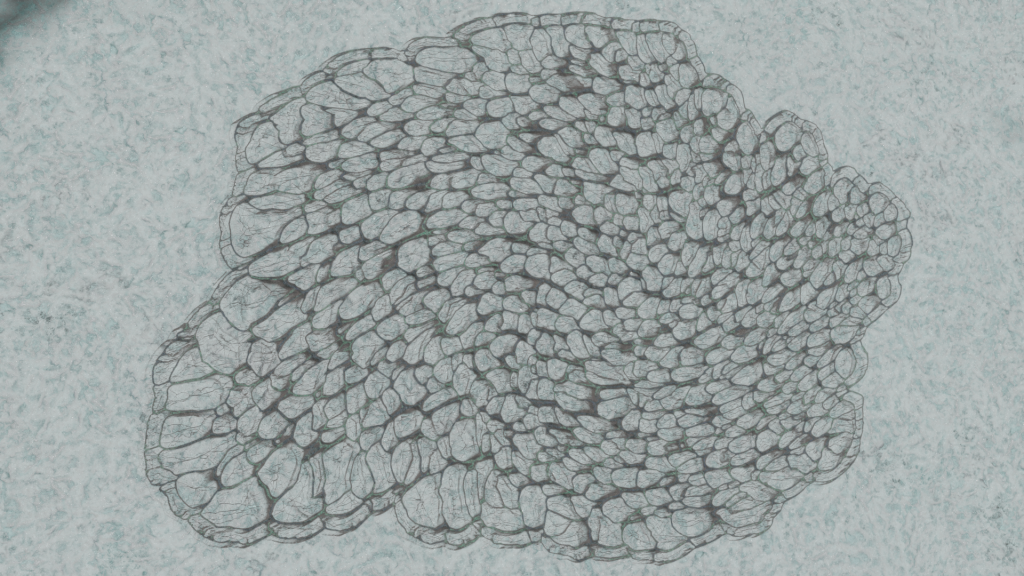
Description
These bacteria survive on worlds with argon—based atmospheres, and appear as a collection of tight loops on the ground.
Conditions of occurrence
- Planet with thin Argon atmosphere
Colored variants
Colored variant determined by rare material found on planet:
| Material | Color |
|---|---|
| Antinomy | Cyan |
| Polonium | Orange |
| Ruthenium | Mulberry |
| Technetium | Gold |
| Tellurium | Red |
| Yttrium | Lime |
Bacterium volu
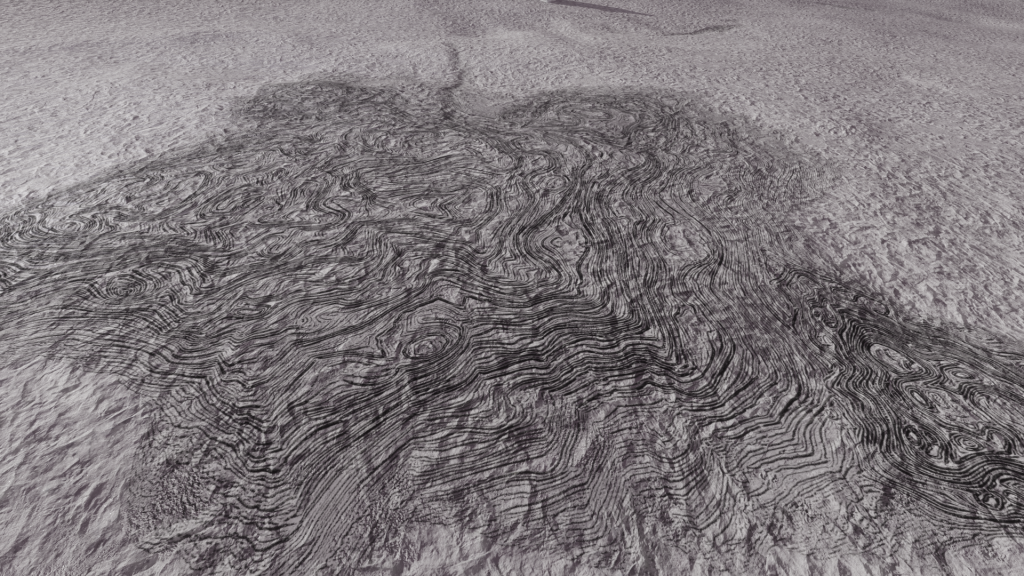
Description
A bacterial species dependent upon oxygen atmospheres, which creates random swirling patterns across the ground.
Conditions of occurrence
- Planet with thin Oxygen atmosphere
Colored variants
Colored variant determined by rare material found on planet:
| Material | Color |
|---|---|
| Antinomy | Red |
| Polonium | Aquamarine |
| Ruthenium | Cobalt |
| Technetium | |
| Tellurium | Cyan |
| Yttrium | Gold |
